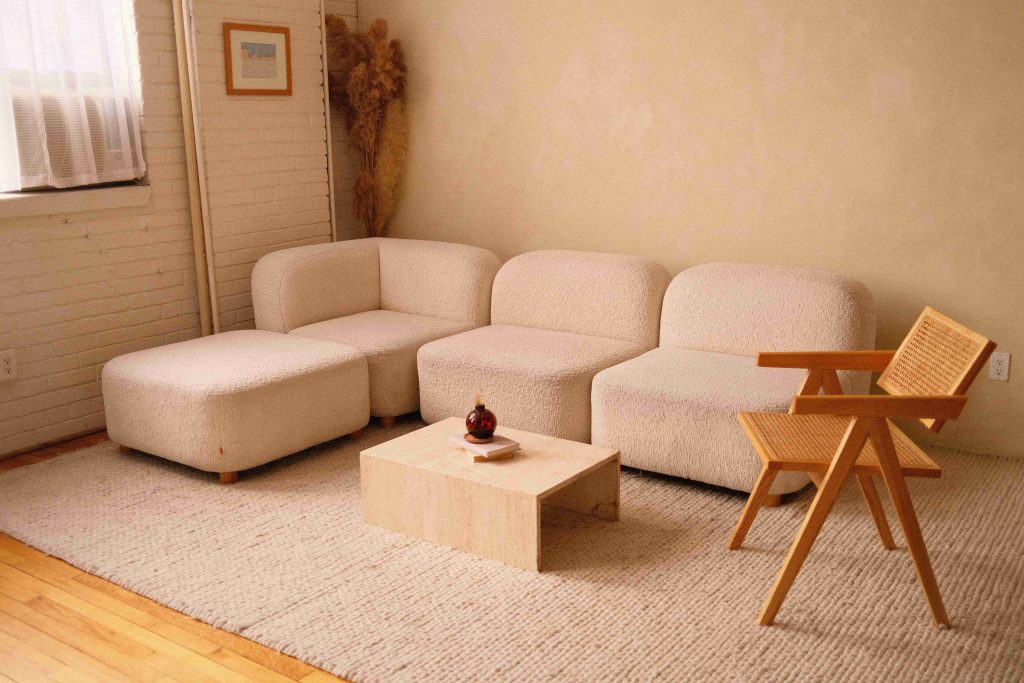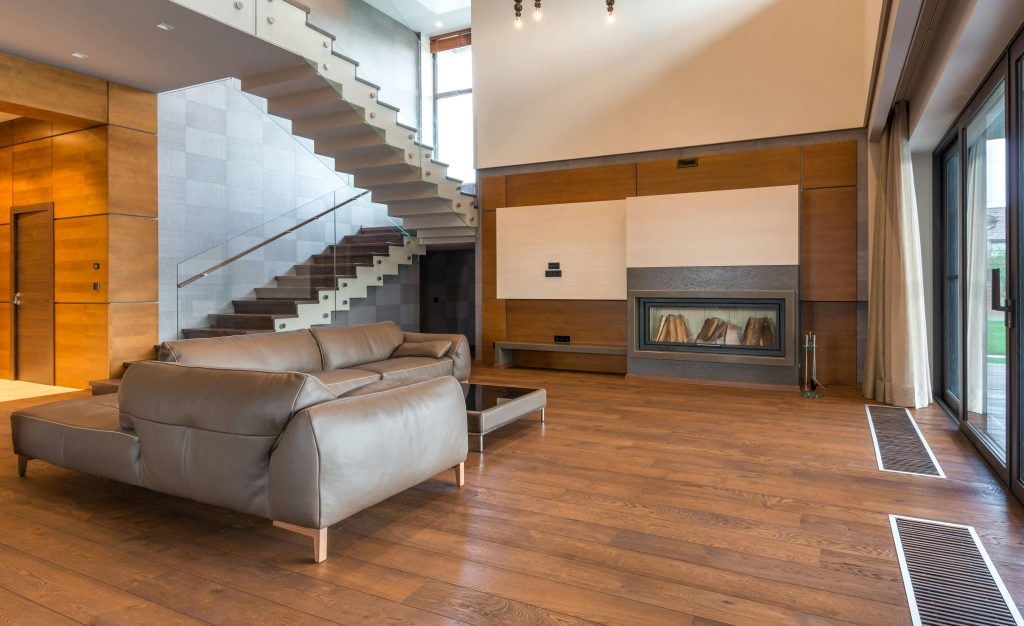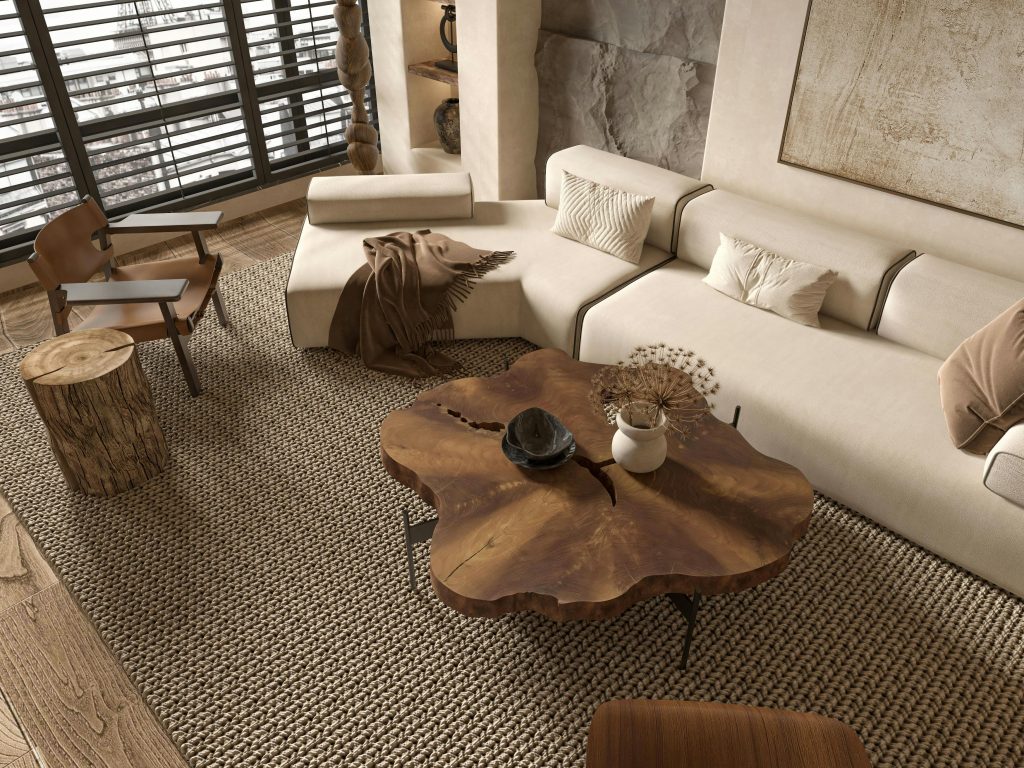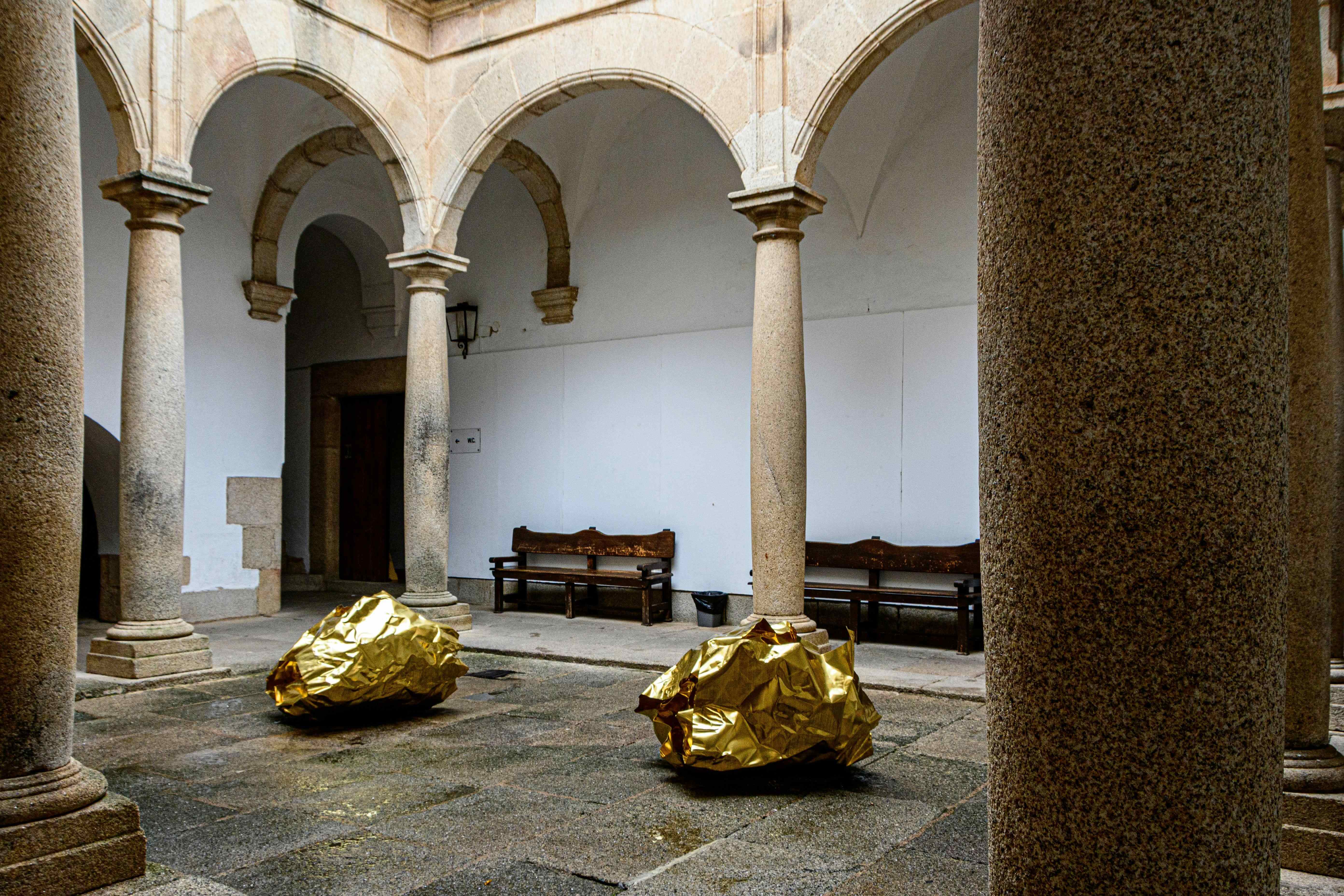In a world that is increasingly fast-paced and digitalised, the minimalism trend emerged, seeking tosimplify and get rid of everything unnecessary. However, this approach does not mean that spacesneed to be cold or impersonal. Warm minimalism is a trendthat combines the minimalist aestheticwith natural elements and details that add warmth and humanise spaces. In this article, we will lookat how to incorporate organic materials and design details to create interiors that are both sereneand cosy.

The Philosophy of Warm Minimalism
Warm minimalism is based on the premise that more is less, but with an emphasis on warmth and comfort. This approach moves away from traditional minimalist interiors that can sometimes look cold and sterile and instead embrace simplicity with a touch of human warmth.
Fundamental Principles
The principles of warm minimalism include reducing visual clutter, carefully selecting decor itemsand using natural materials. The key lies in creating spaces that are both functional and aesthetically pleasing, without sacrificing comfort and charm.
Benefits of Warm Minimalism
Adopting warm minimalism in interior design brings multiple benefits. As well as fostering a relaxing, tidy setting, this approach encourages a deeper connection to nature and organic materials. Simplicity and warmth combined can improve the inhabitants’ emotional and mental wellbeing, creating a personal refuge in the midst of daily chaos.
Organic Materials: The Essence of Nature in theHome
Organic materials are essential in warm minimalism, as they add texture, colour and a sense ofauthenticity. These materials connect the inhabitants to nature itself, creating a harmonious,balanced ambiance.
Natural Wood
Wood is one of the most commonly used materials in warm minimalism. Its warm hues and naturaltexture add depth and character to any space. From floors and furnishings to architectural details like exposed beams, wood brings a sense of warmth and connection to nature.
Stone and Marble
The use of stone and marble on surfaces and decor items can add a touch of natural luxury. These materials are hard-wearing and timeless, and the variations in colour and texture create visual interest without becoming overwhelming. Using stone or marble on countertops, chimney breastsor bathrooms can transform a minimalist space into a cosy refuge.
Natural Fibres
Natural fibres, such as linen, cotton and wool, are essential for adding softness and comfort tominimalist interiors. These materials are not only pleasing totouch, but they also add a sense of wellbeing and authenticity. Incorporating cushions, blankets and rugs in natural fibres can soften the clean lines of minimalism and create a cosy ambiance.
Design Details: The Key to Humanising Spaces
Design details are what really humanise and personalise a minimalist space. These subtle touches canmake the difference between an interior that feels cold and one that invites you to relax and enjoy it.
Neutral Colours and Earthy Hues
Neutral colours and earthy hues areessential in warm minimalism. These colours create a peaceful, balanced base that can be enhanced with bold accents if desired. Colours such as beige, cream, softgrey and warm browns add a sense of serenity and warmth.

Warm Lighting
Lighting plays a vital role in creating cosy settings. Choosing warm lights instead of cold ones cantransform the perception of a space. Floor lamps, built-in lights with dimmers and candles are excellent ways to achieve soft, enveloping lighting.
Artisan Elements
Incorporating artisan elements into the decor adds a personal, unique touch to minimalist interiors.From handmade ceramics to artisan fabrics, these objects bring history and character to the space.What’s more, supporting local artisans and using handmade products can bring sustainability and ethics to decor.
Plants and Vegetation
Plants and vegetation are essential items when it comes to humanising minimalist spaces. They notonly add colour and life; they also improve the air quality and create ahealthier atmosphere. Indoor plants, such as succulents, ferns and ficus, are easy to look after and blend perfectly into a warm minimalist design.
How to Implement Warm Minimalism in Your Home
Achieving a warm minimalist design requires a careful, deliberate approach. Here are some practical tips for incorporating this trend in your home.
Simplification and Clutter
The first step is to get rid of clutter. Only keep objects that you really love and that have apurpose. Simplicity is key, but remember that every object needs to contribute to the warmthand comfort of the space.
Choosing Materials
Go for natural and organic materials wherever possible. Wood, stone and natural fibres need to takecentre stage in your design. These materials are not only aesthetically pleasing; they are also sustainable and hard-wearing.

Colour Palette
Choose a palette of neutral colours and earthy hues that reflect peacefulness and warmth. You can add touches of colour with decorative accessories and details, but make sure you maintain asimple, harmonious design base.
Incorporating Plants
Add indoor plants to bring nature inside your home. Plants not only improve air quality; they also adda touch of freshness and vitality. Choose pots and planters that complement your design and positionthe plants strategically where they can get enough natural light.
Strategic Lighting
Use warm, adjustable lighting to create different ambiances depending on the occasion. Floorlamps, table lamps and built-in lights with dimmers will let you adapt the lighting to your needs and preferences.
Personal Touches
Don’t forget to add personal touches that reflect your style and personality. Artisan elements,family photographs and travel souvenirs can bring character and make your home feel truly unique.


